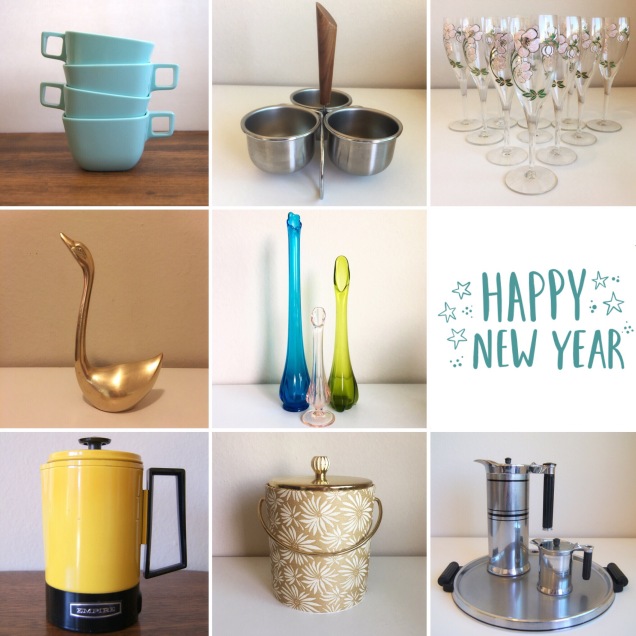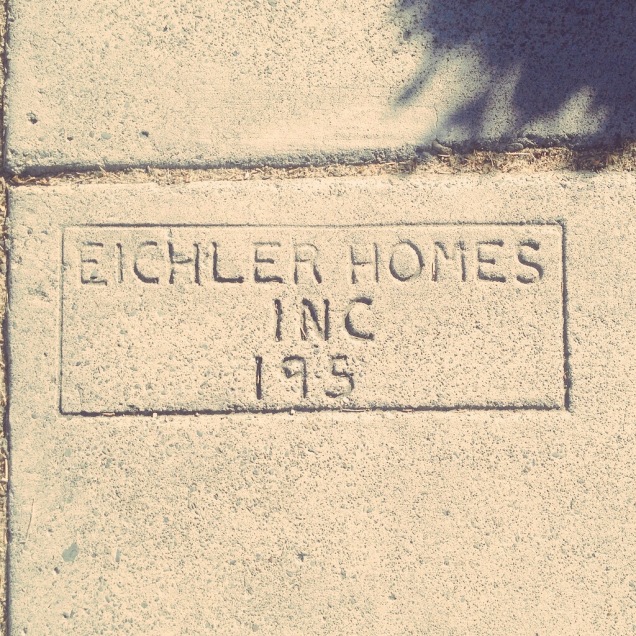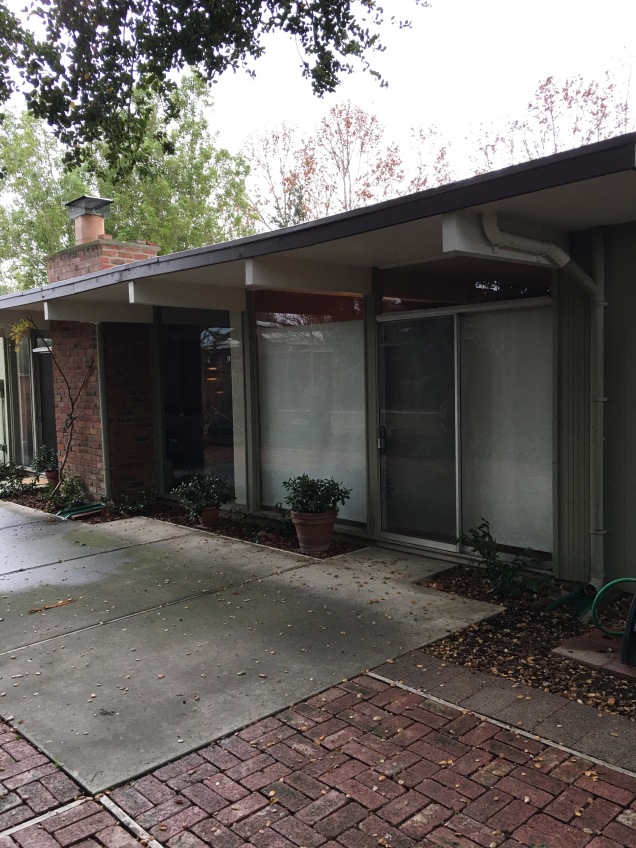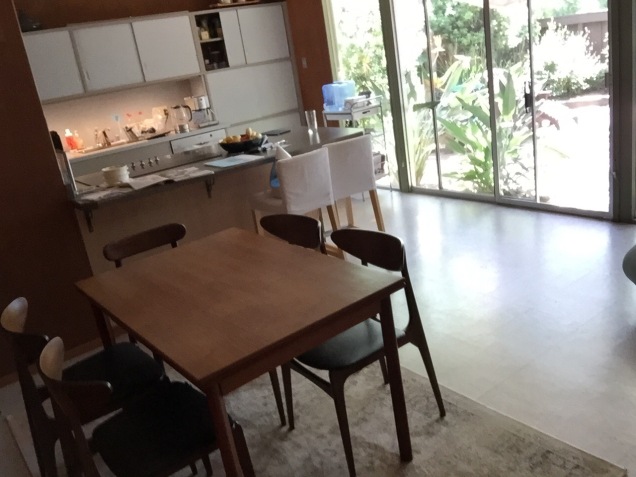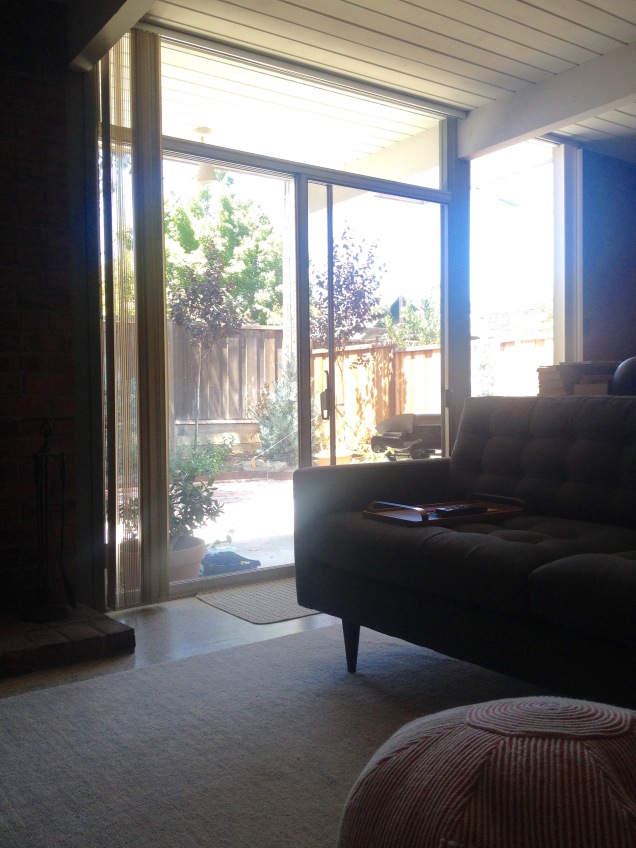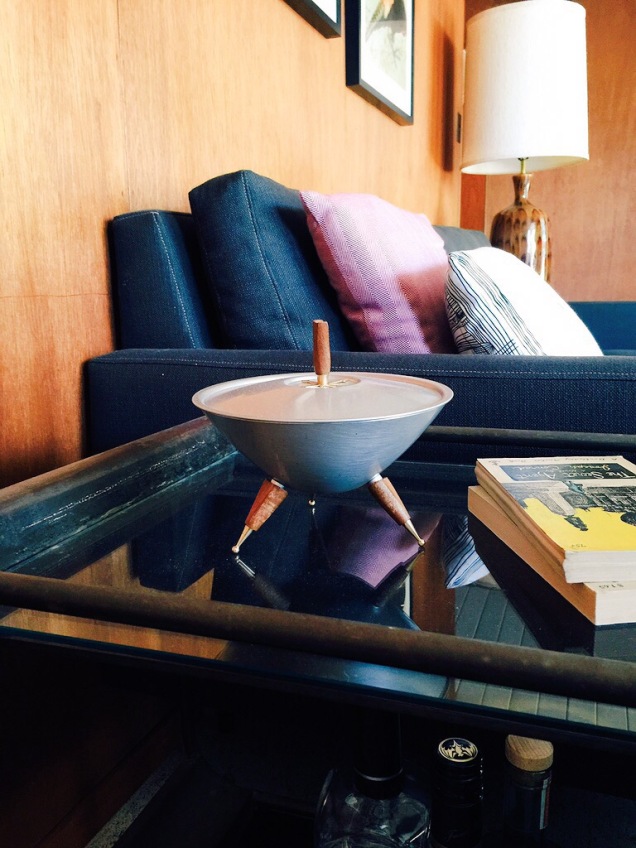Submitted by Fletcher M, Minnesota.
Living in a daylight basement in Central Minnesota, I had struggled to find a lighting solution for my “cave” that I found both functional and aesthetically pleasing. With an outlook onto a gorgeous lake, I had always positioned my work desk in front of the window, which was perfect during daytime hours, but offered no light fixture available in the immediate space during the evening hours. I needed a lighting solution that I could plug in, but also wanted it to hang from the ceiling and shine down on the work space, rather than be a floor lamp.

I’ve always loved mid-century pieces, particularly ones with a more industrial feel, so I had an idea in mind of what I was looking for and set out to find the perfect lamps. I found a pair of filthy hanging lamps, stashed away in my brother-in-laws shed, and knew I could rewire them and restore them to their former glory. They had originally come from an art studio, built in the early 1960’s, and were the exact mix of vintage and industrial I was looking for.

After cleaning off decades of grime, the enamel finish shone, and there was very little damage to the original finish.

Next up, it was a simple rewire and they were ready to hang. I connected a dimmer switch to the outlet and added vintage style Edison bulbs to complete the look. I tidied up the wires using cable staples and absolutely love the final outcome!
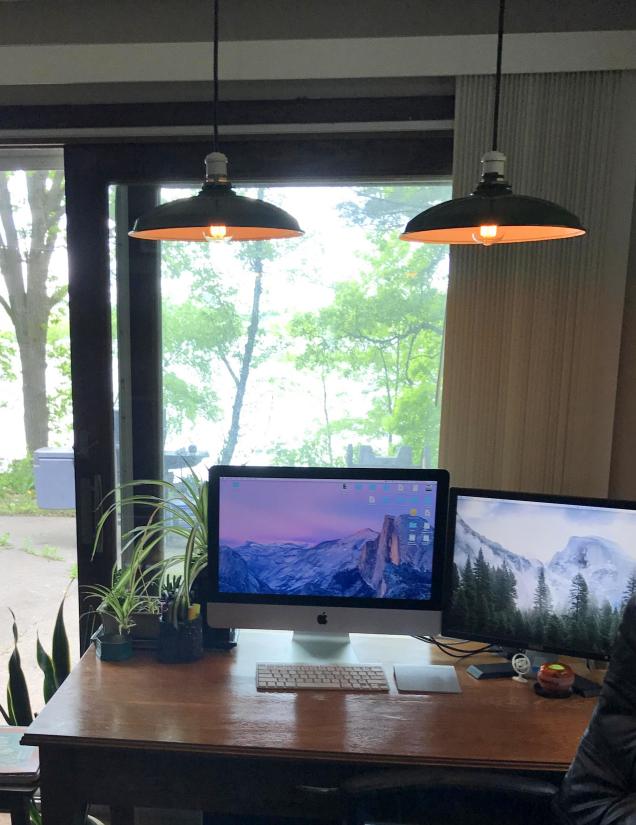
Check out the slideshow below for more “after” images.




